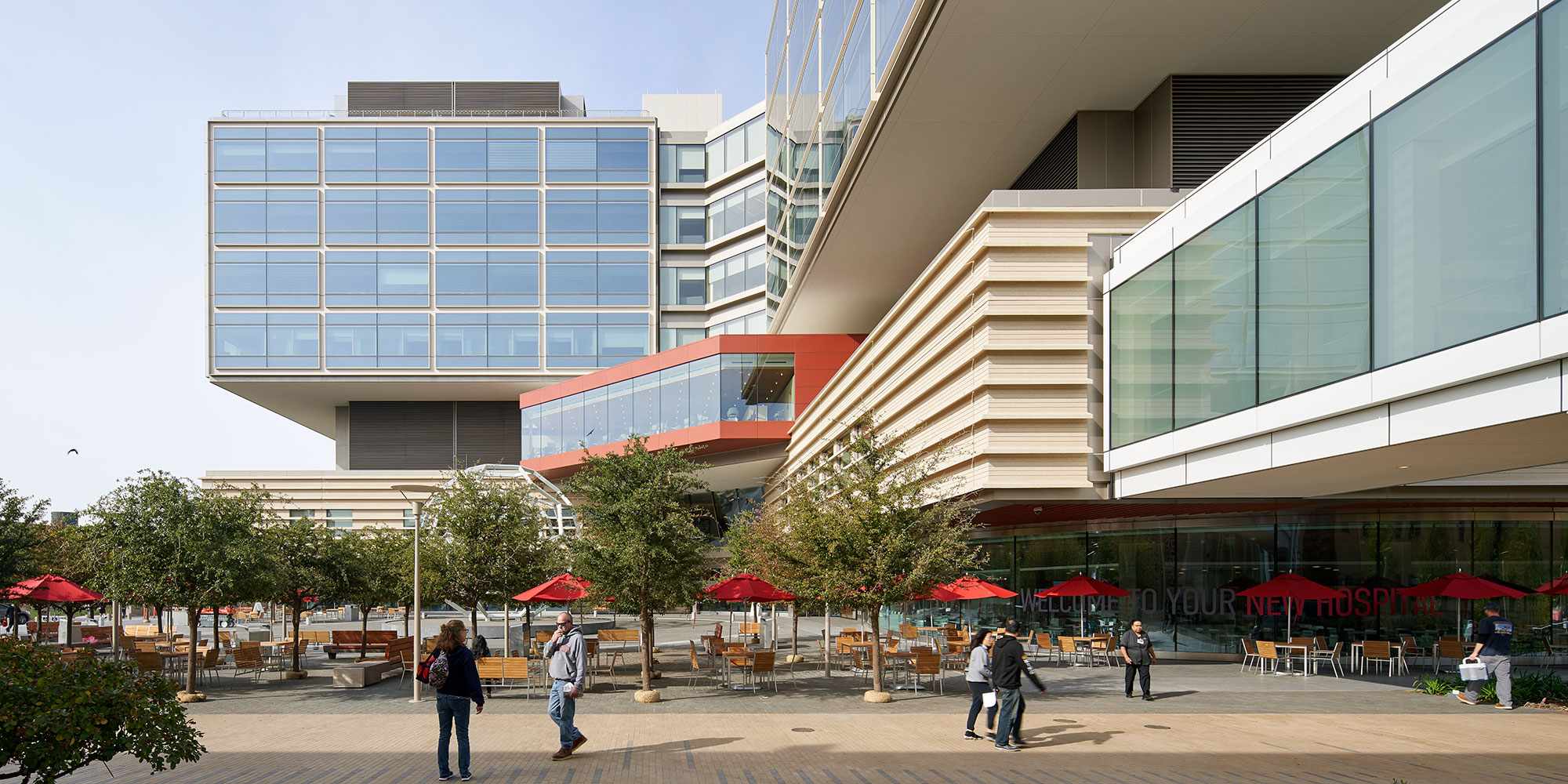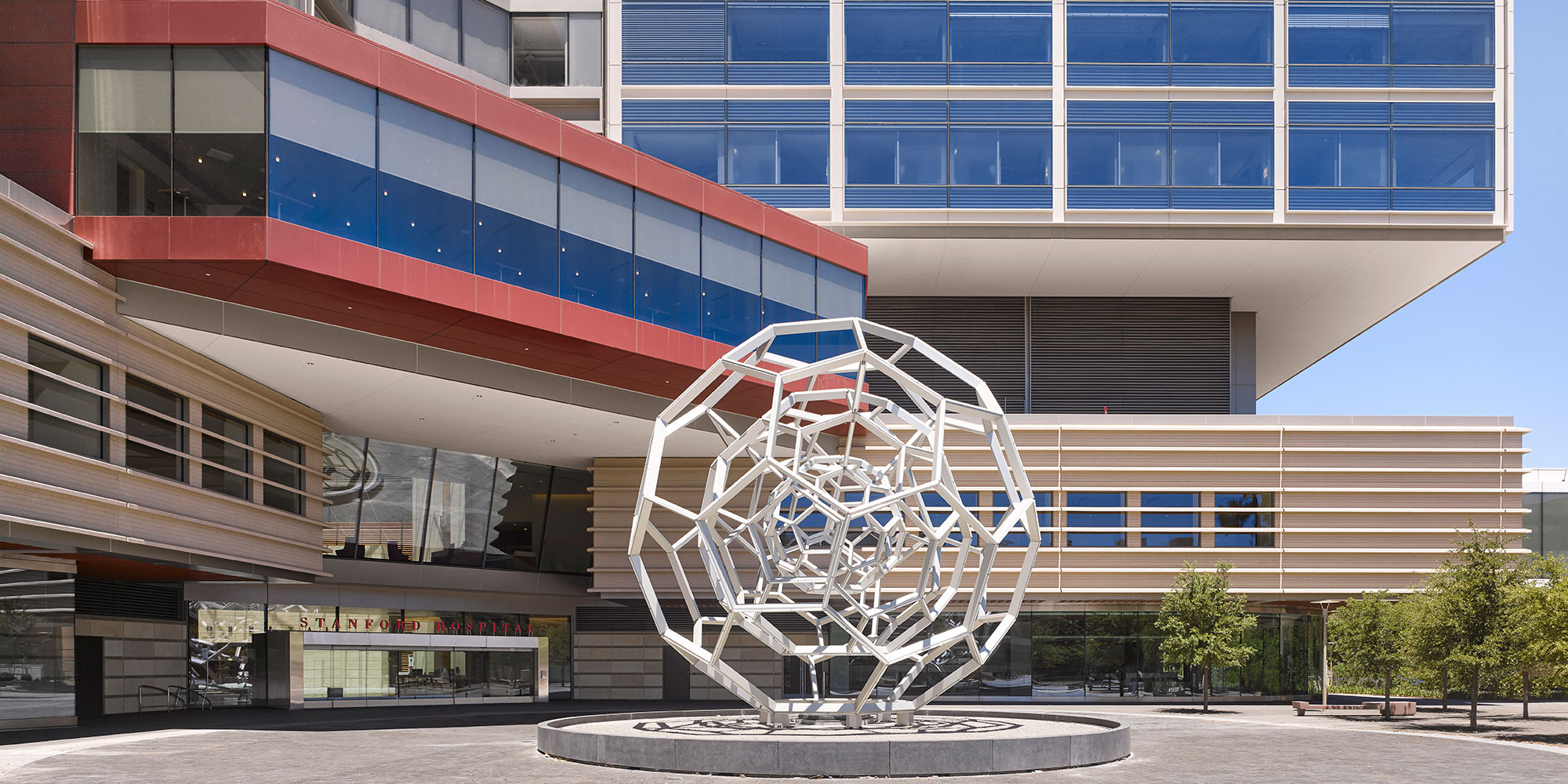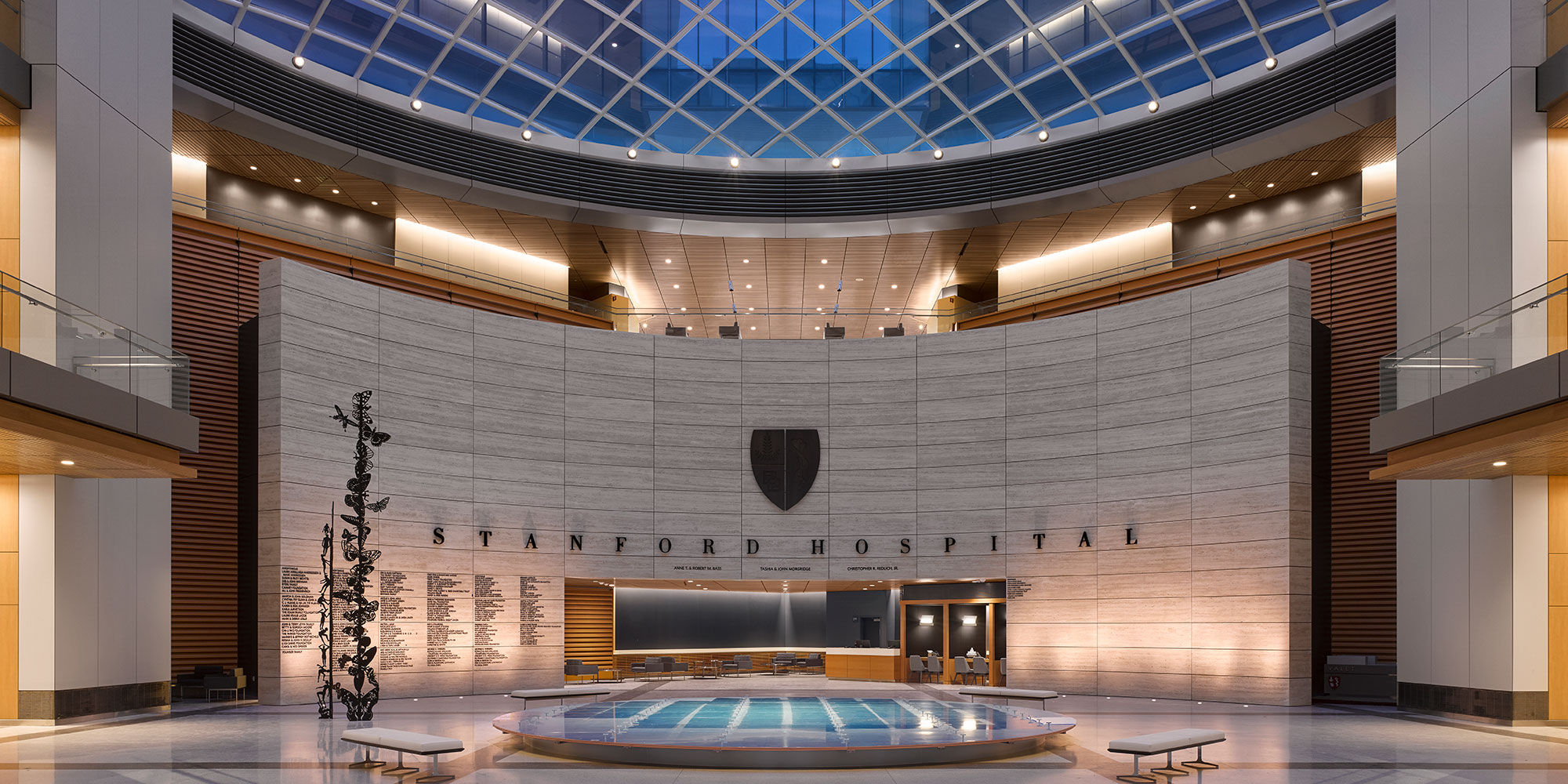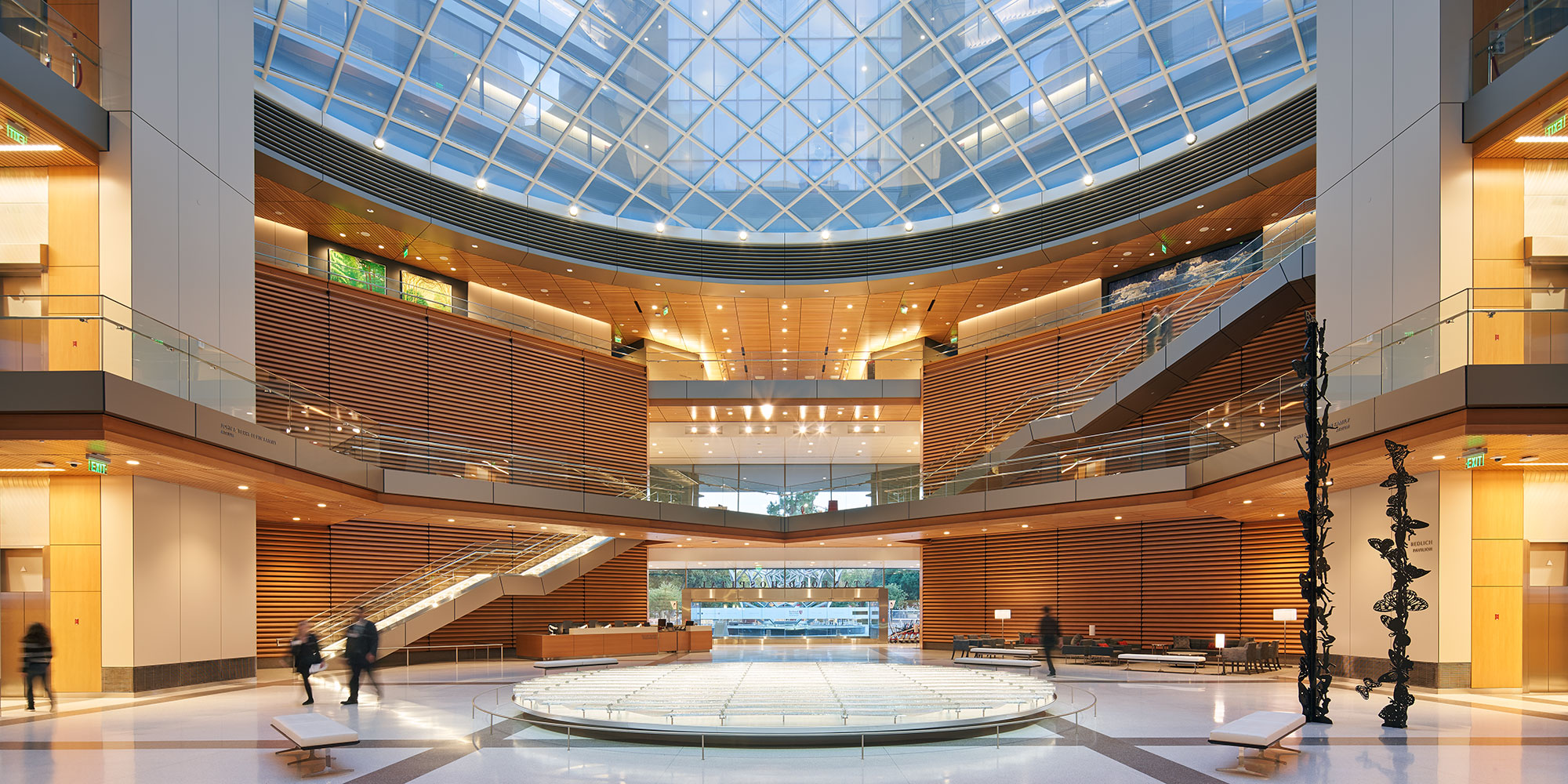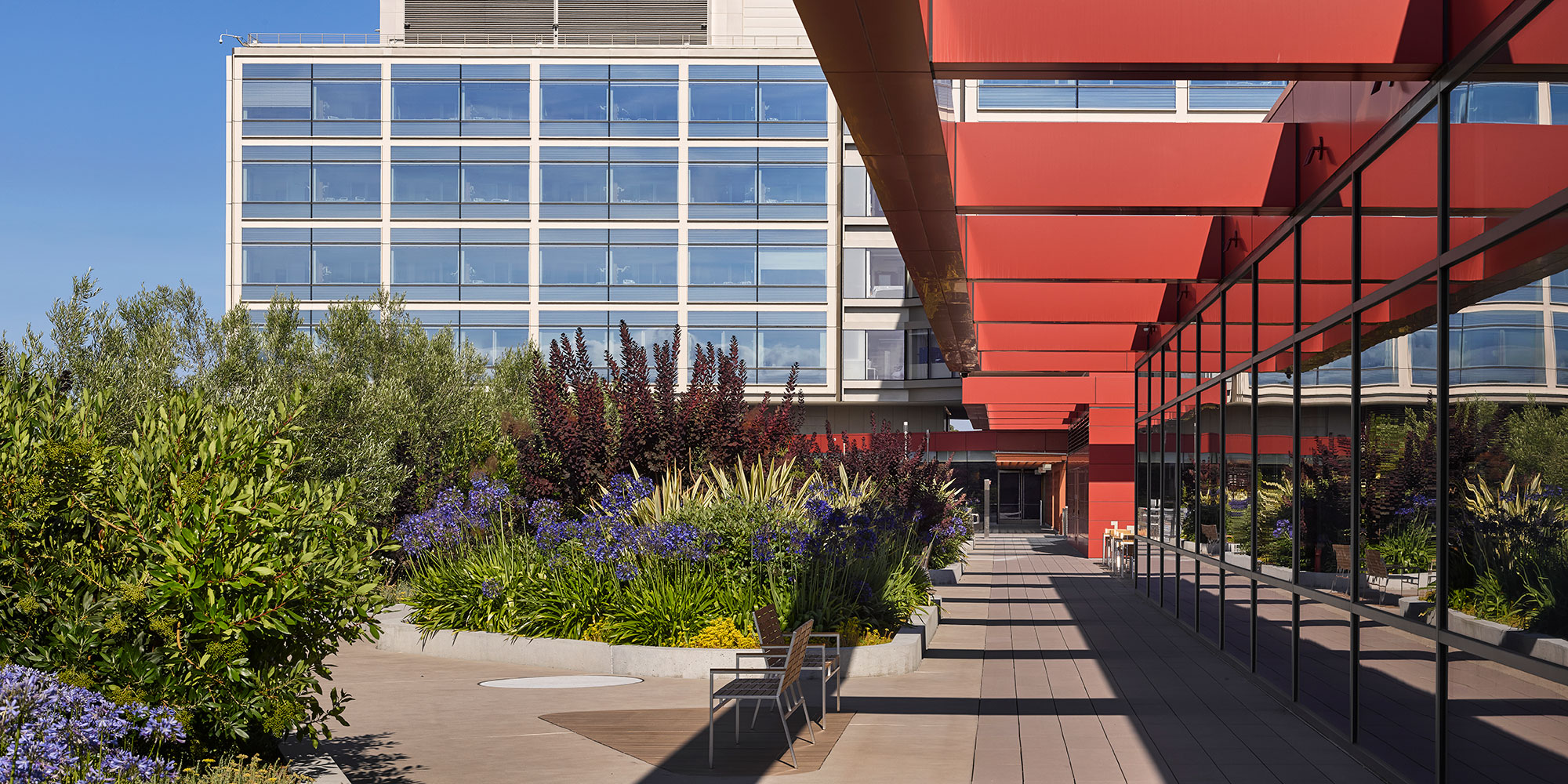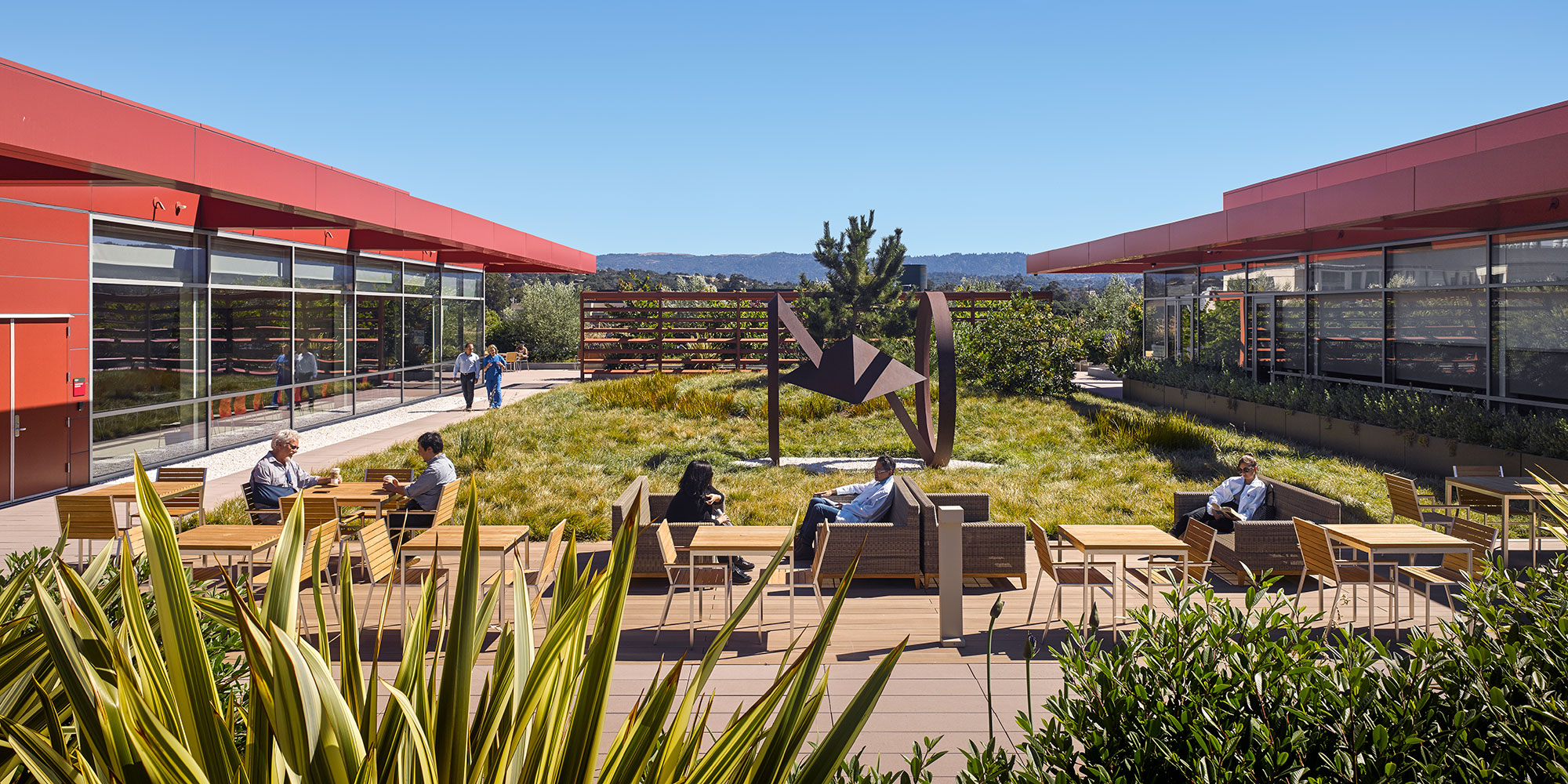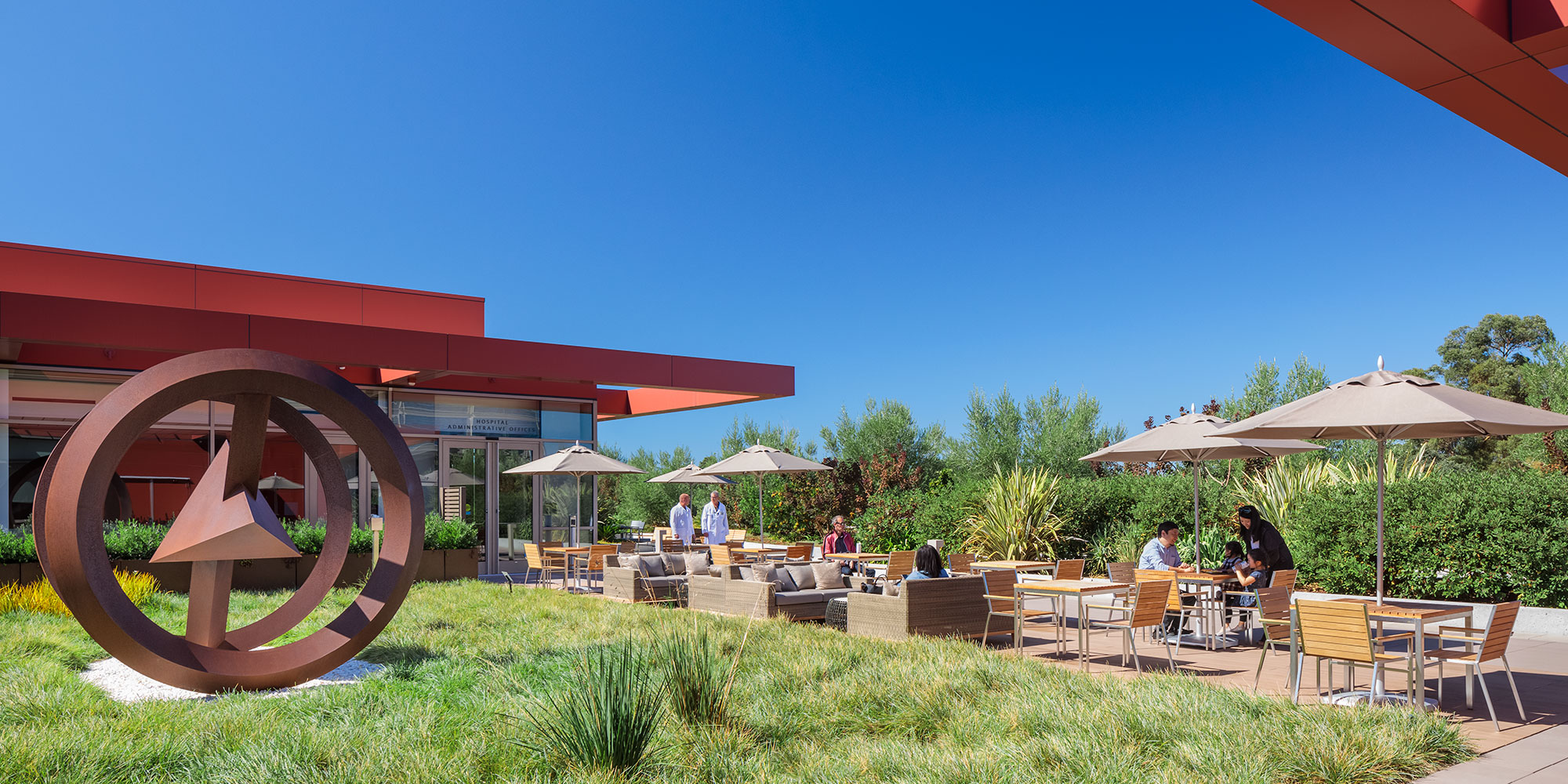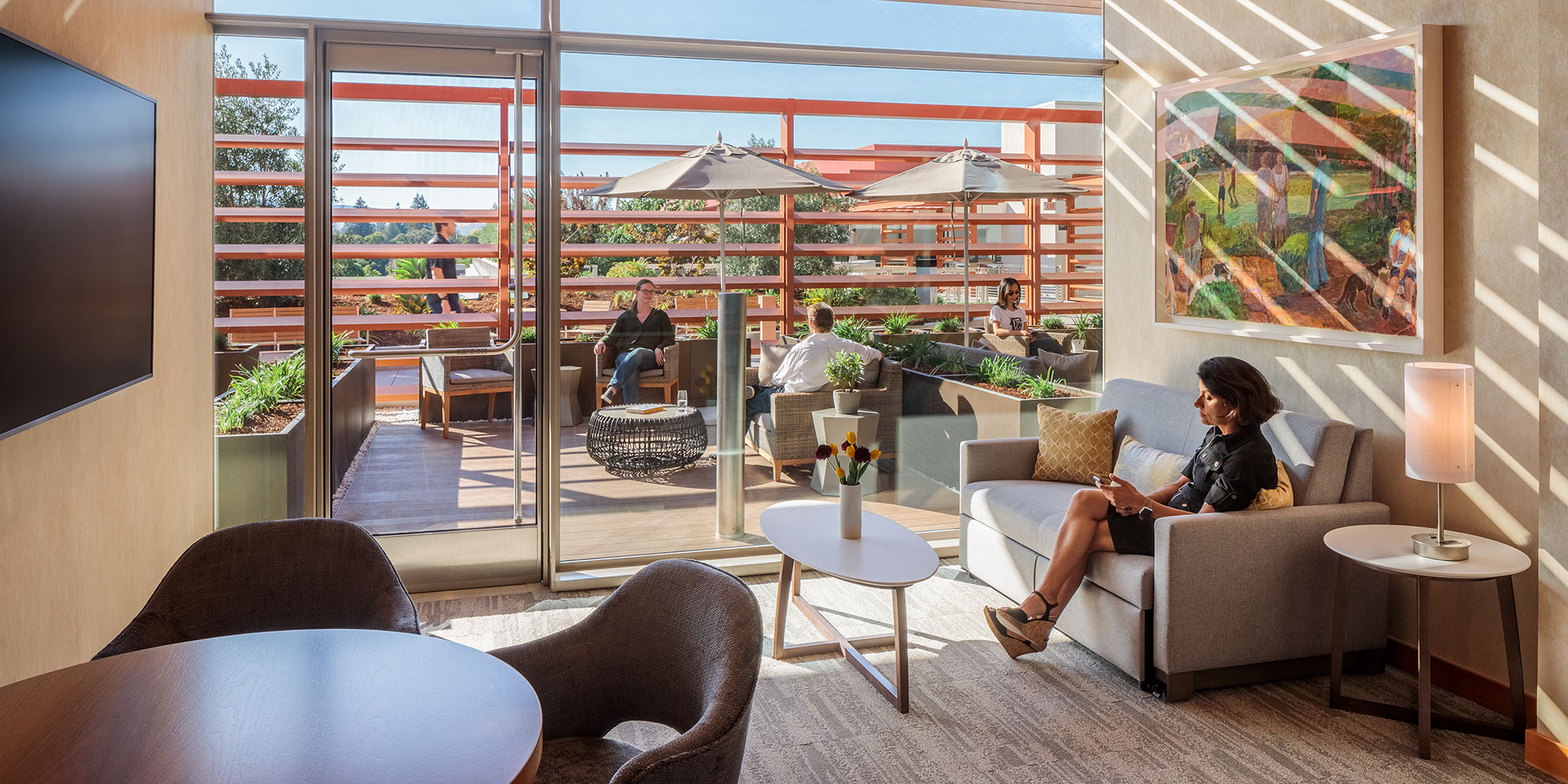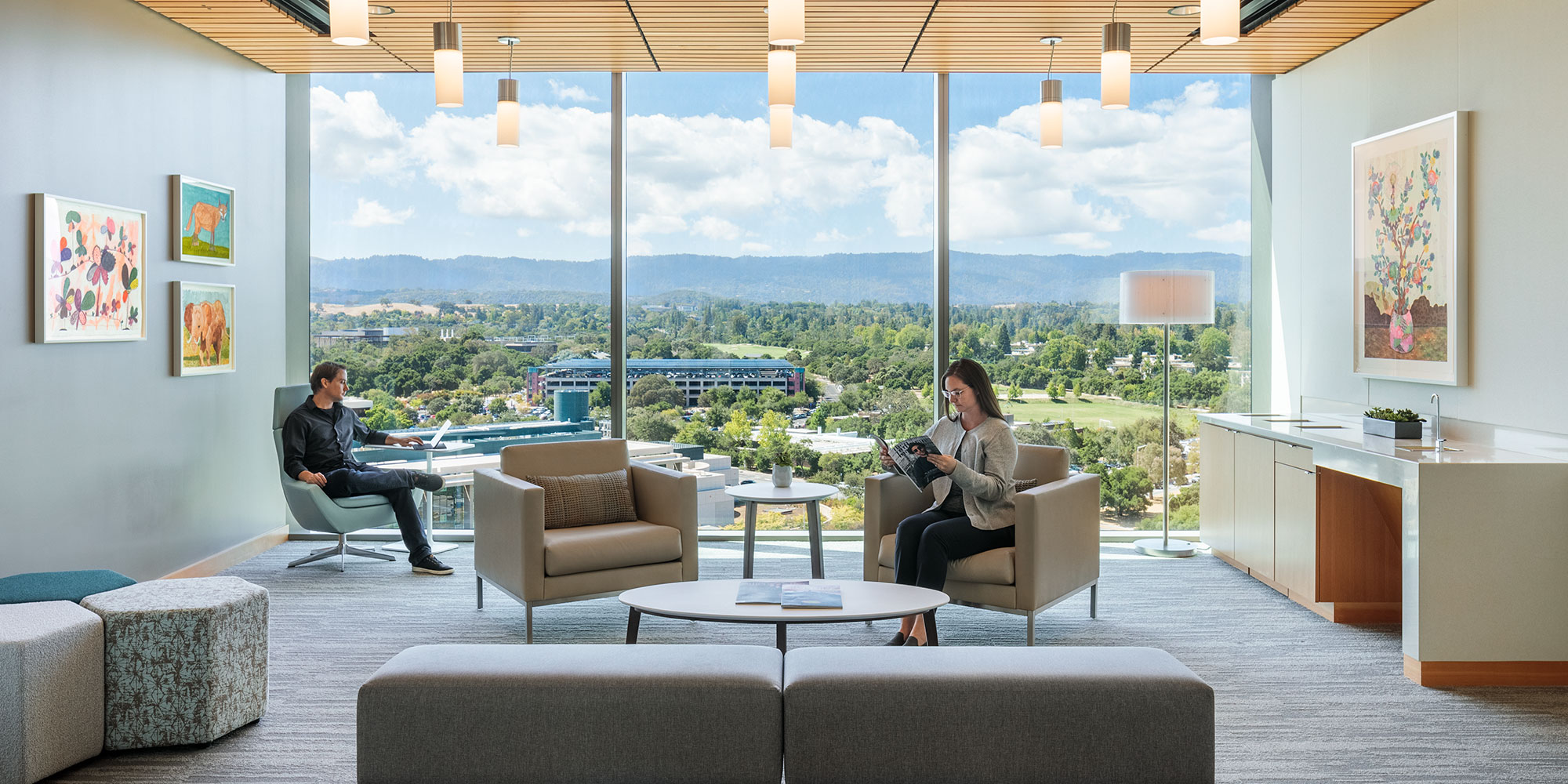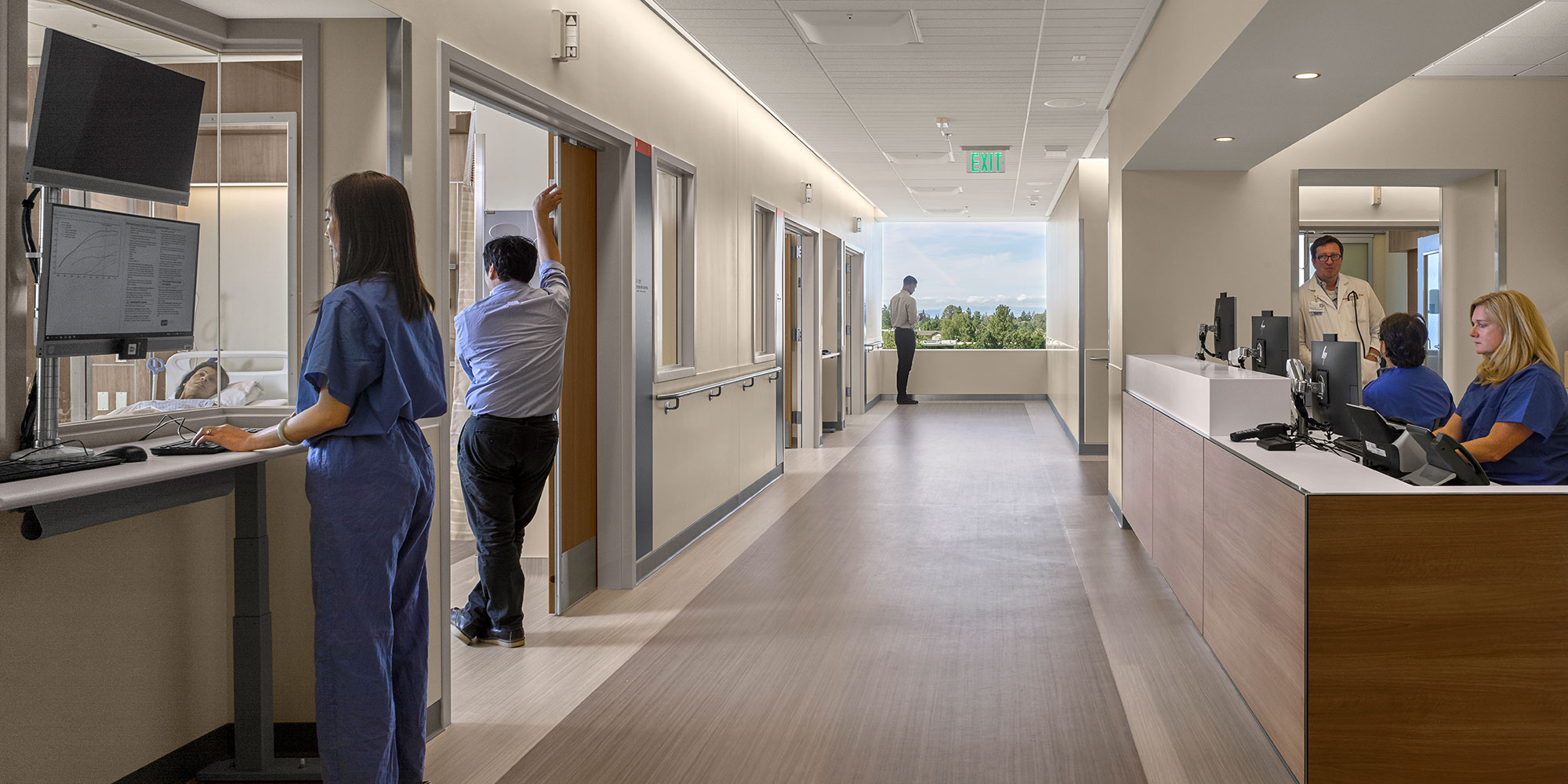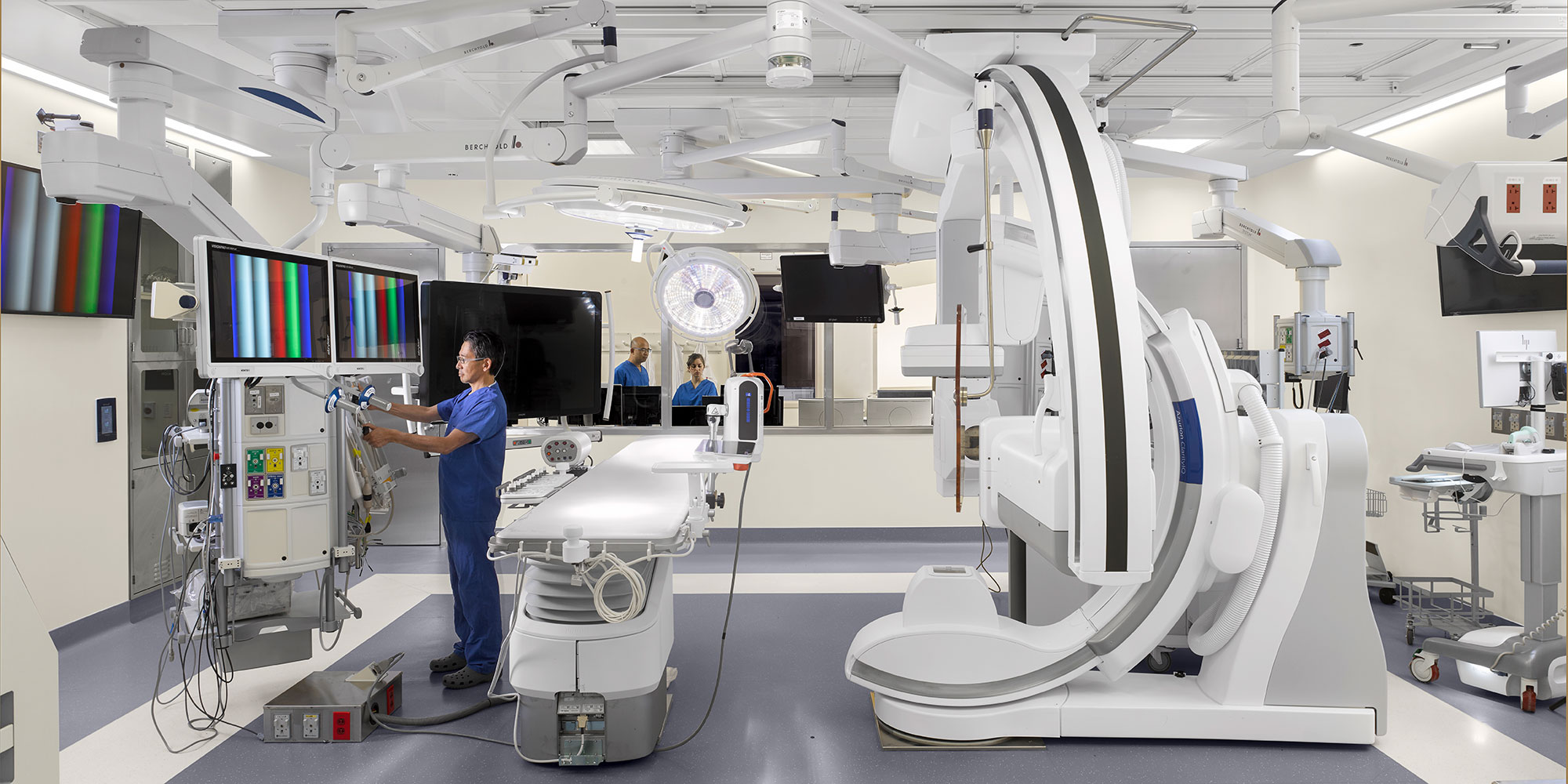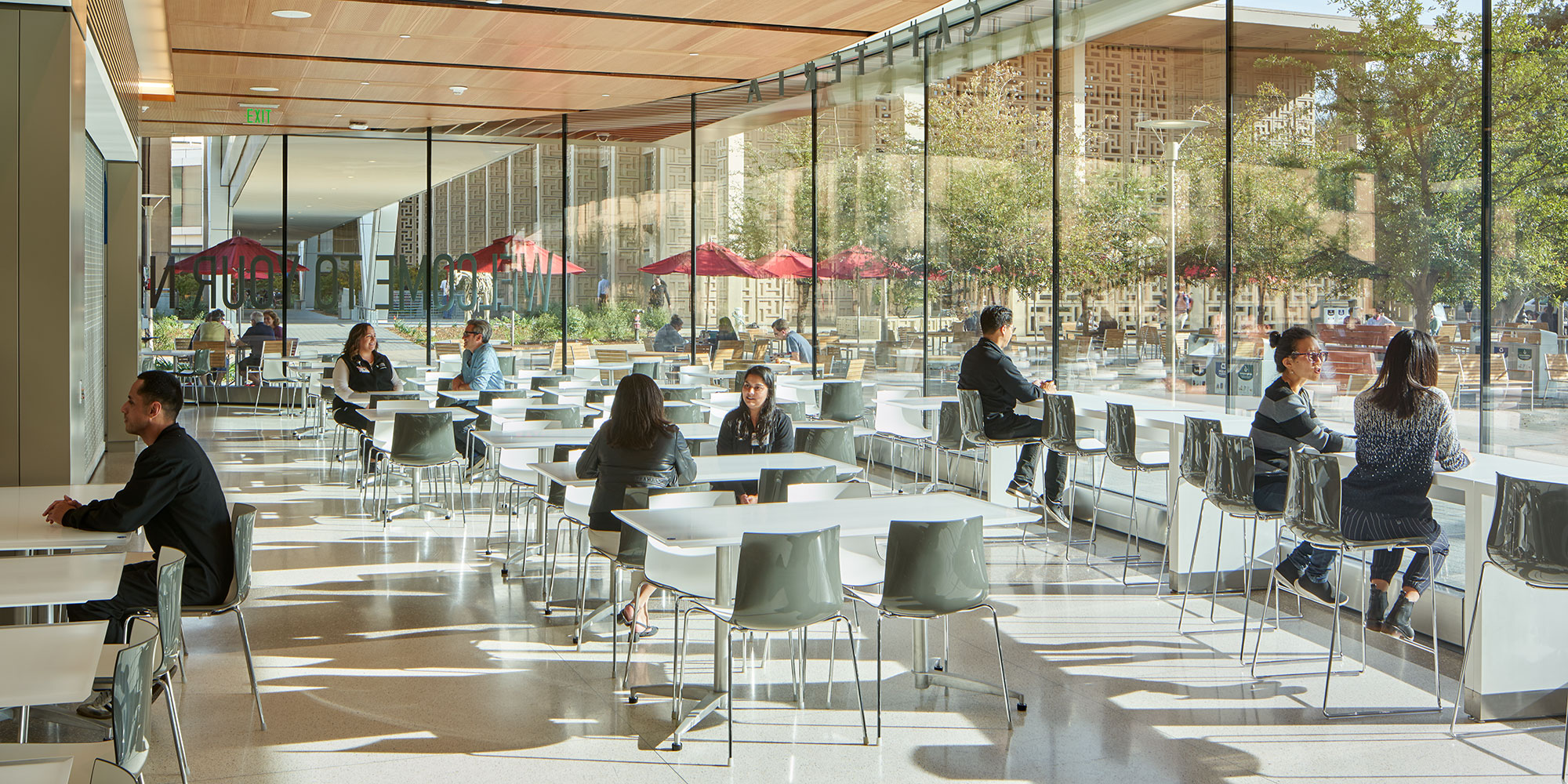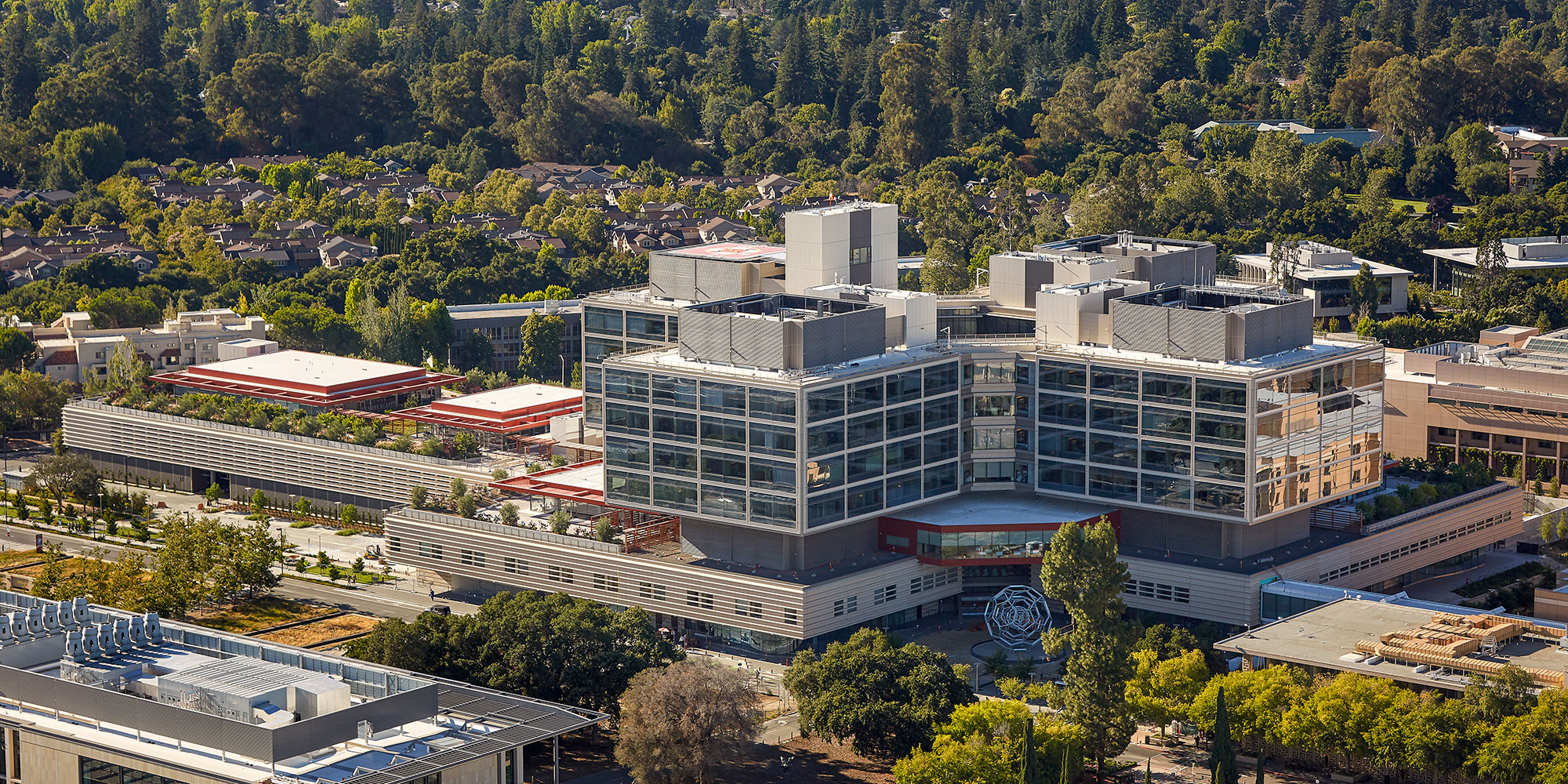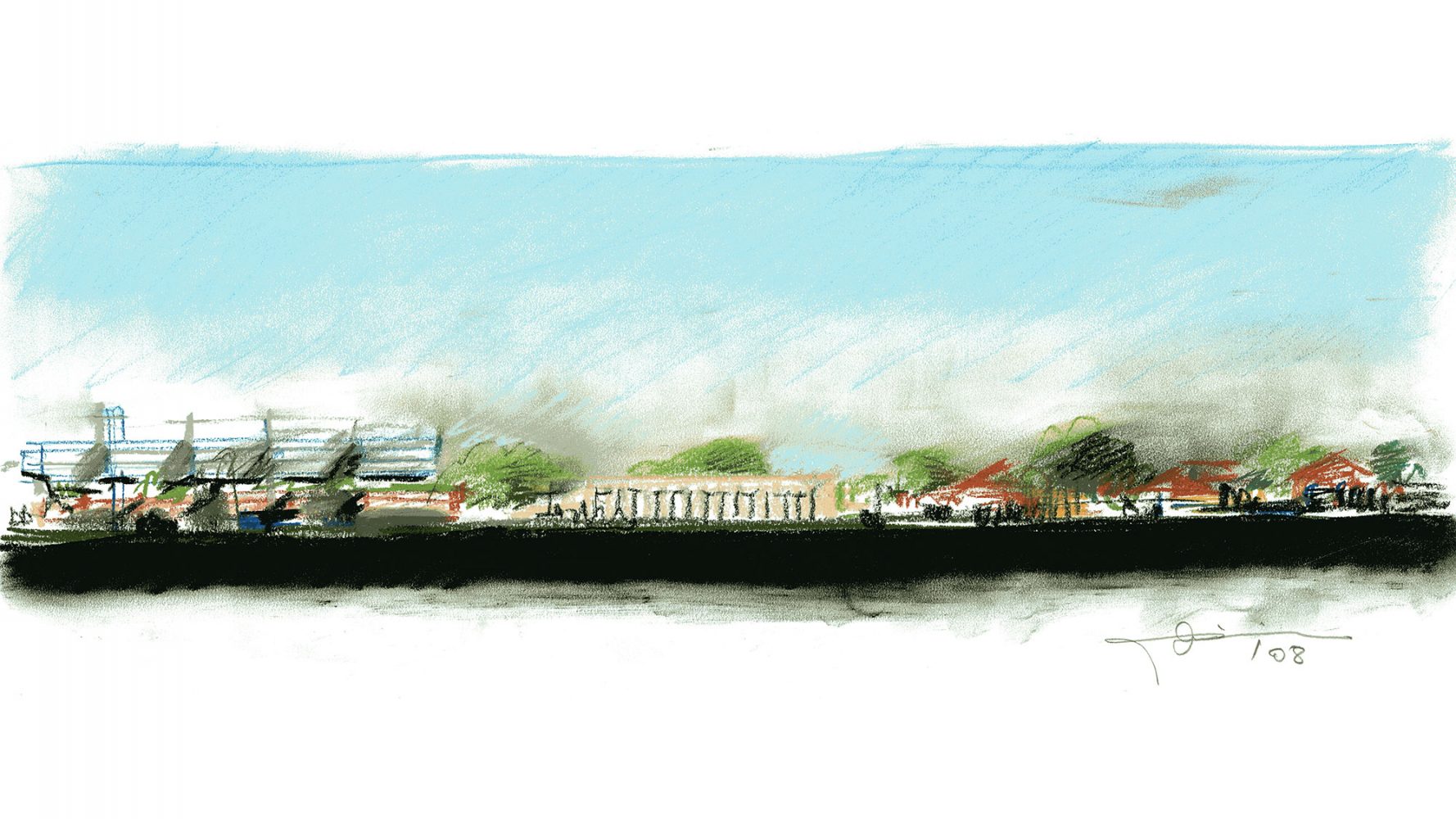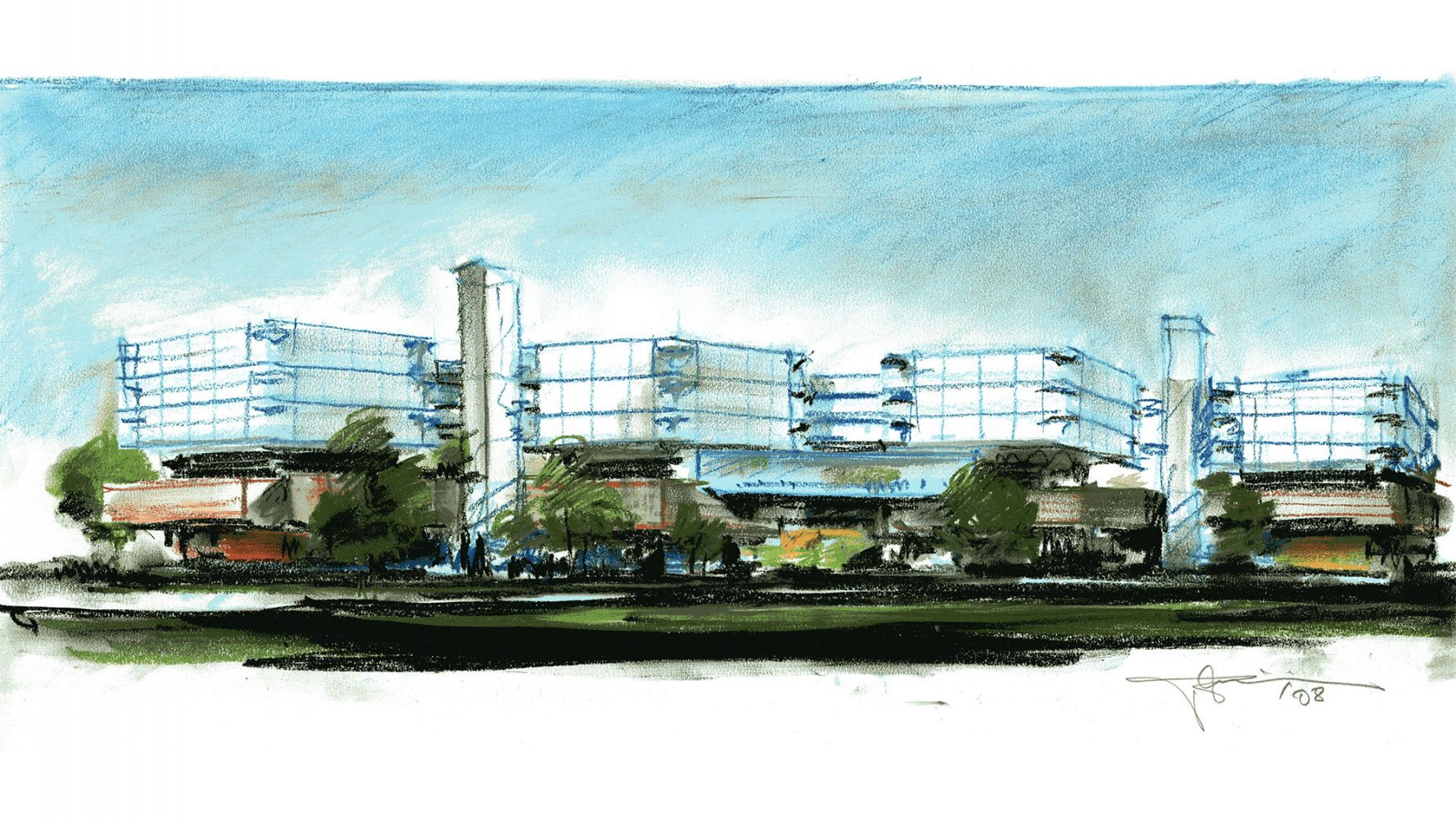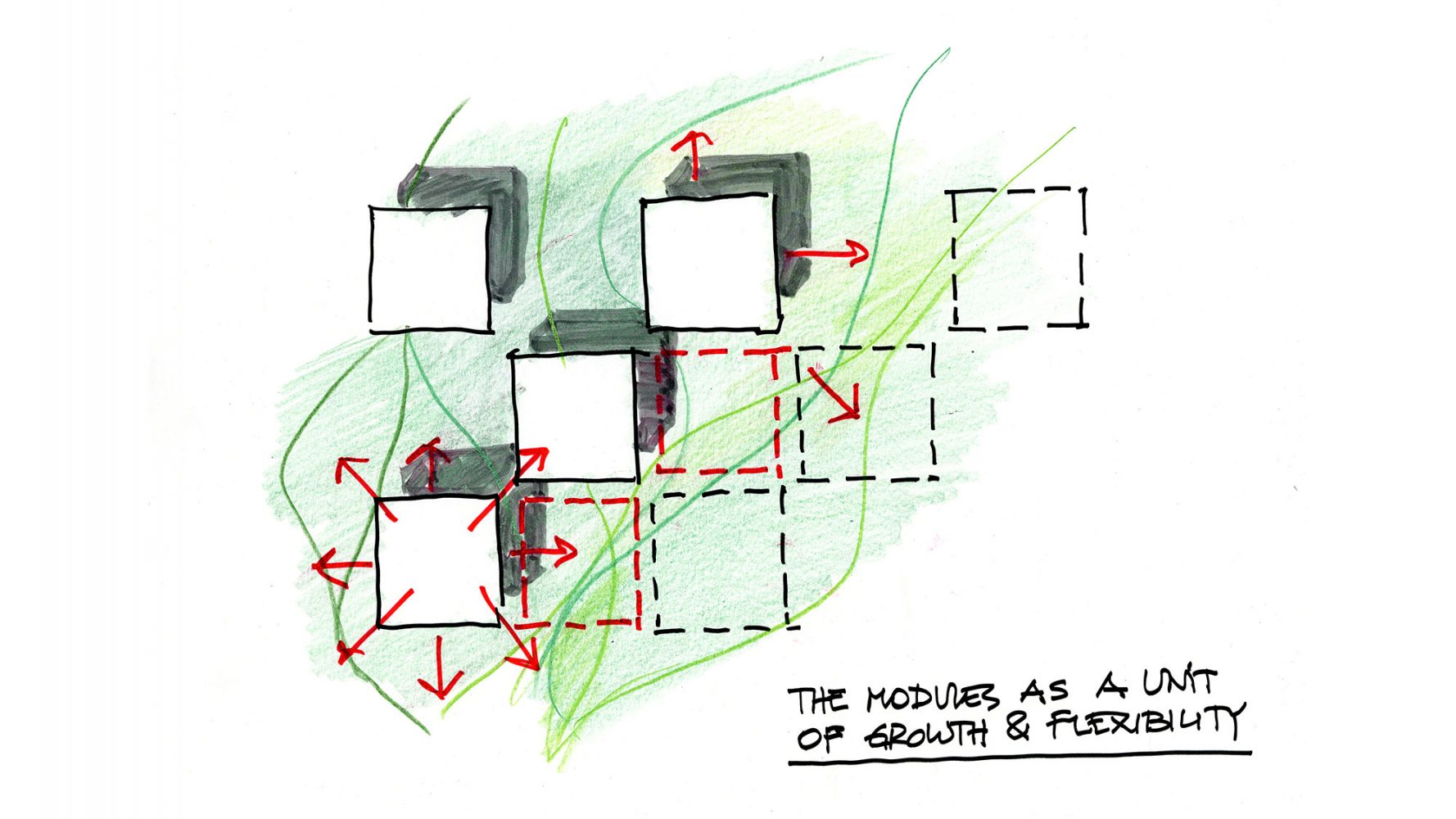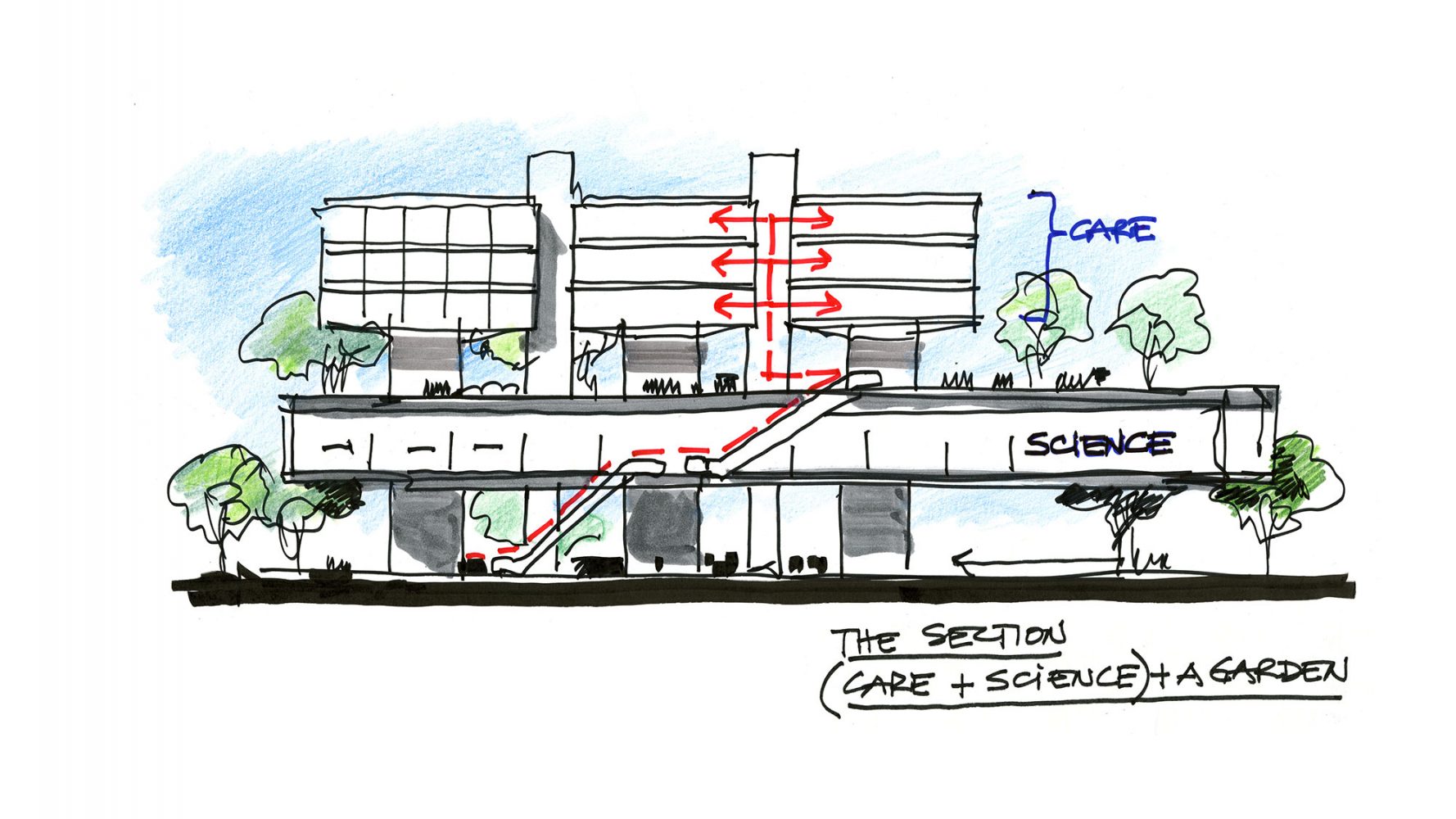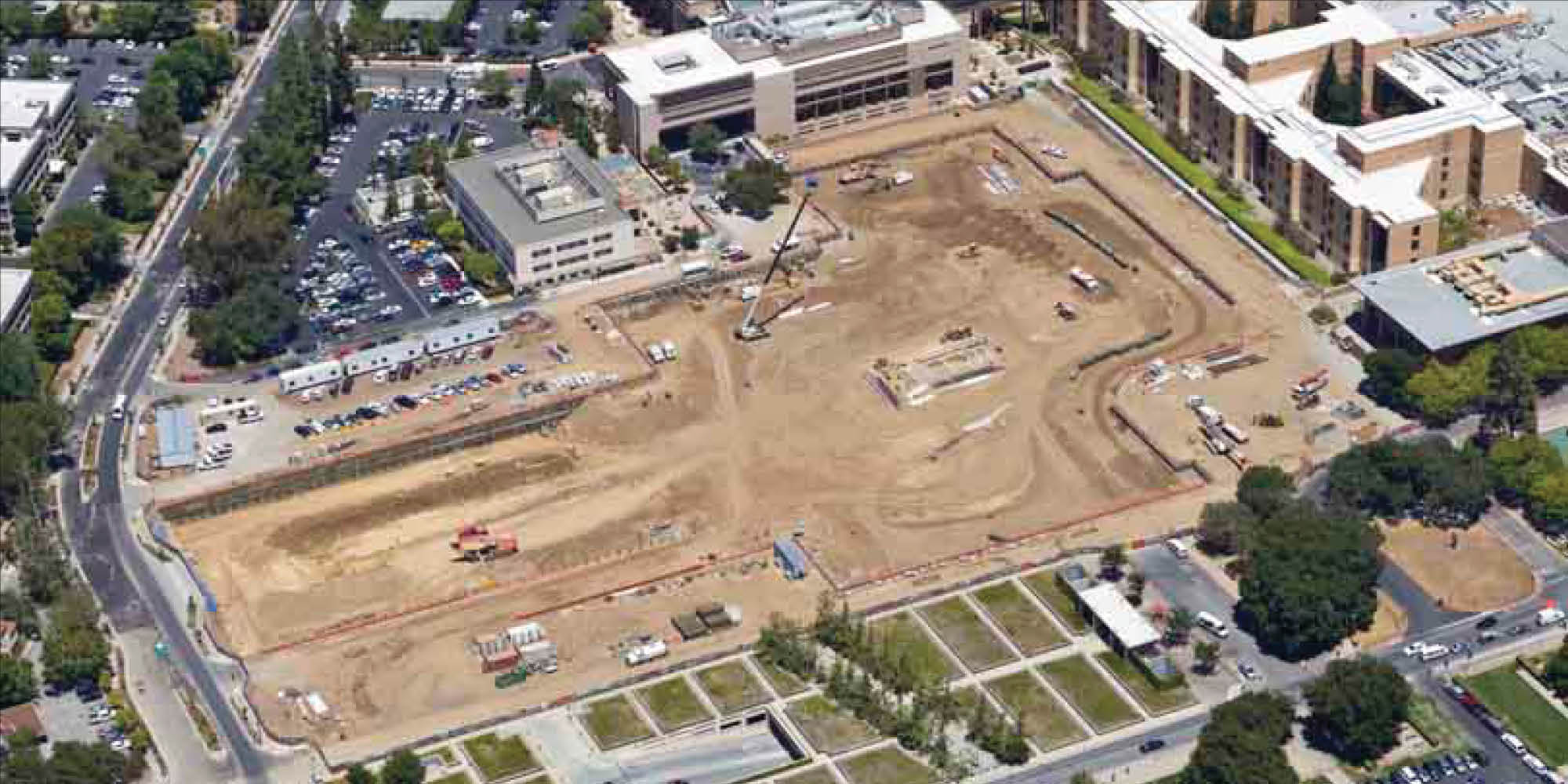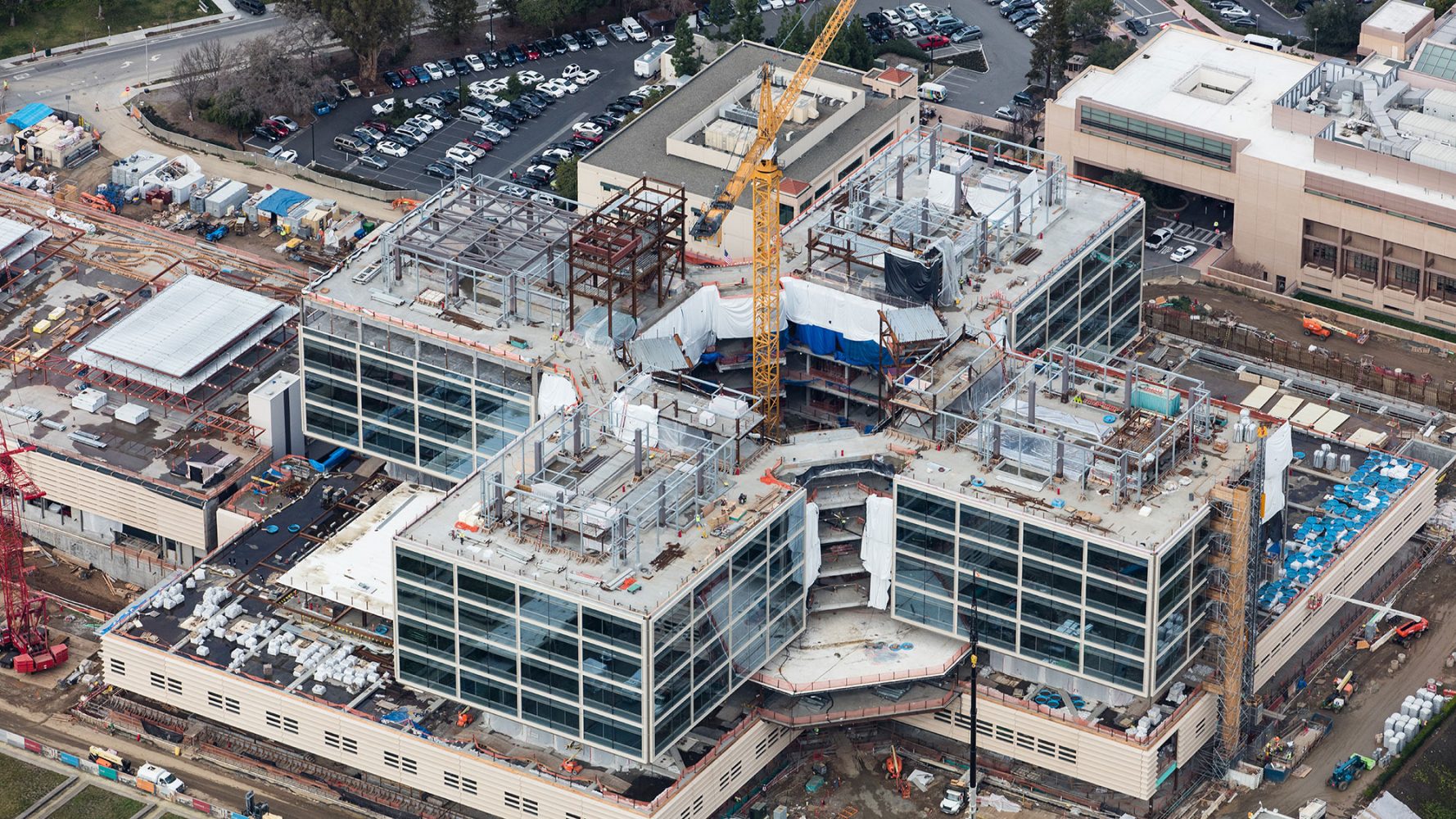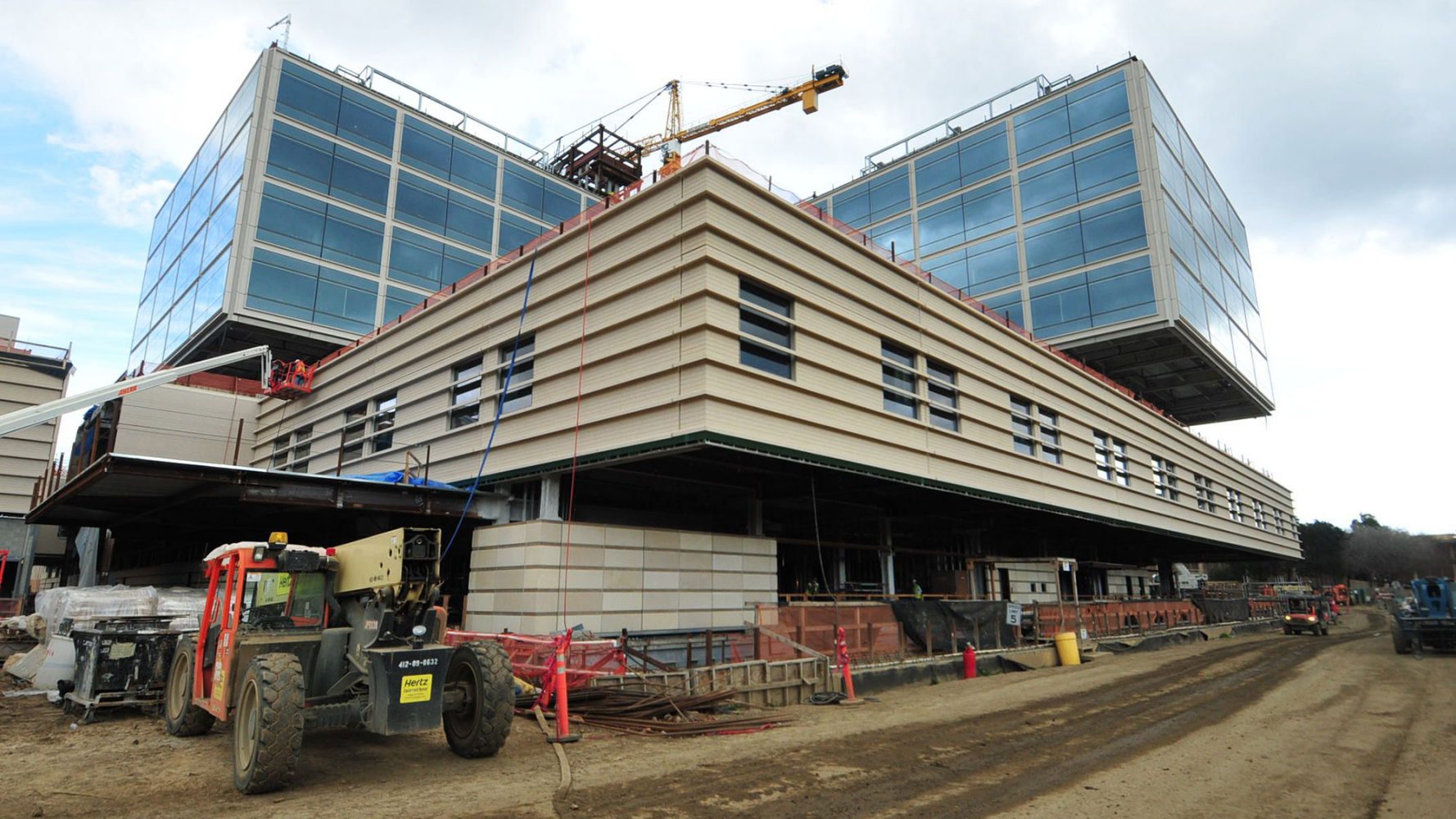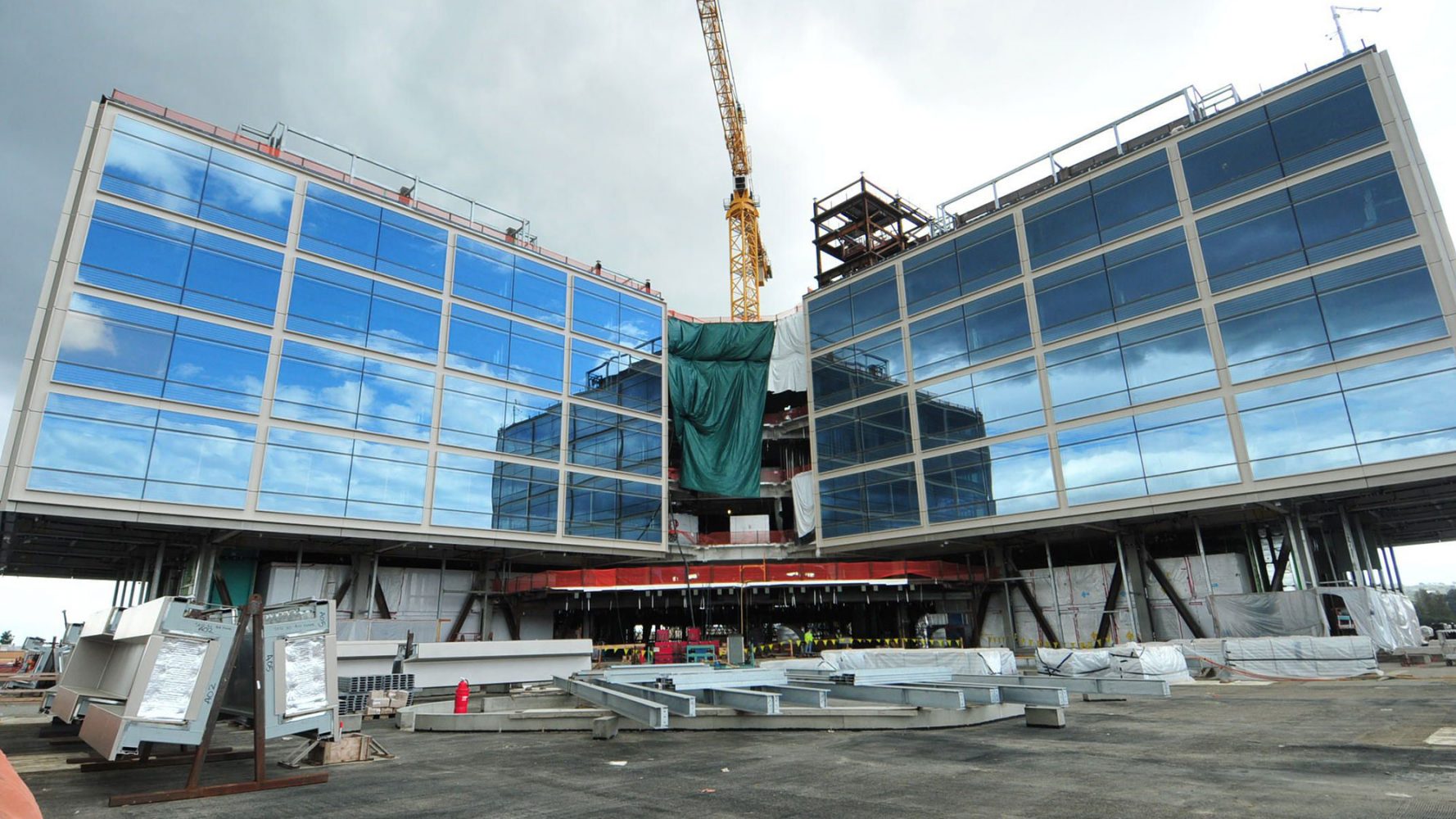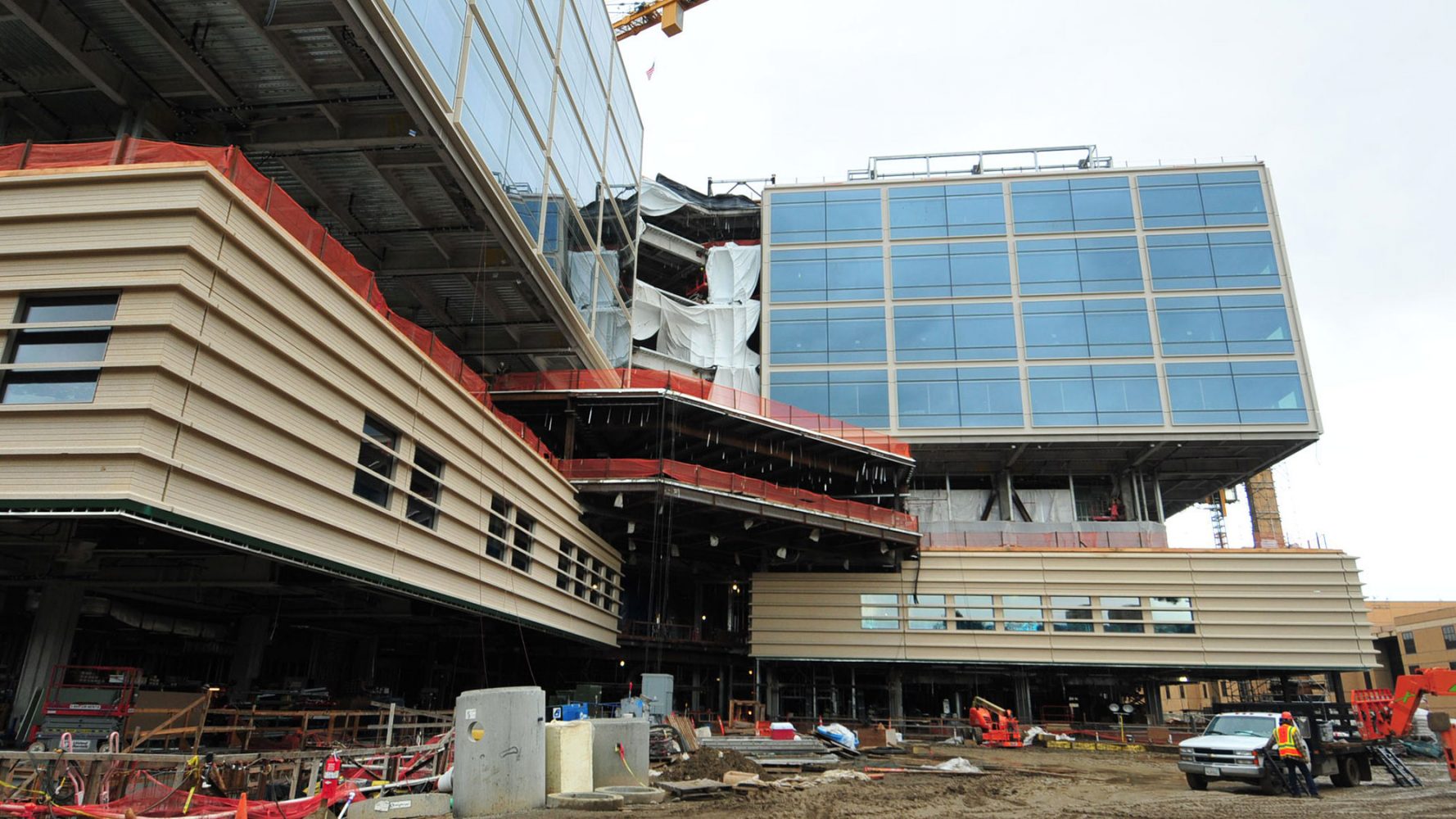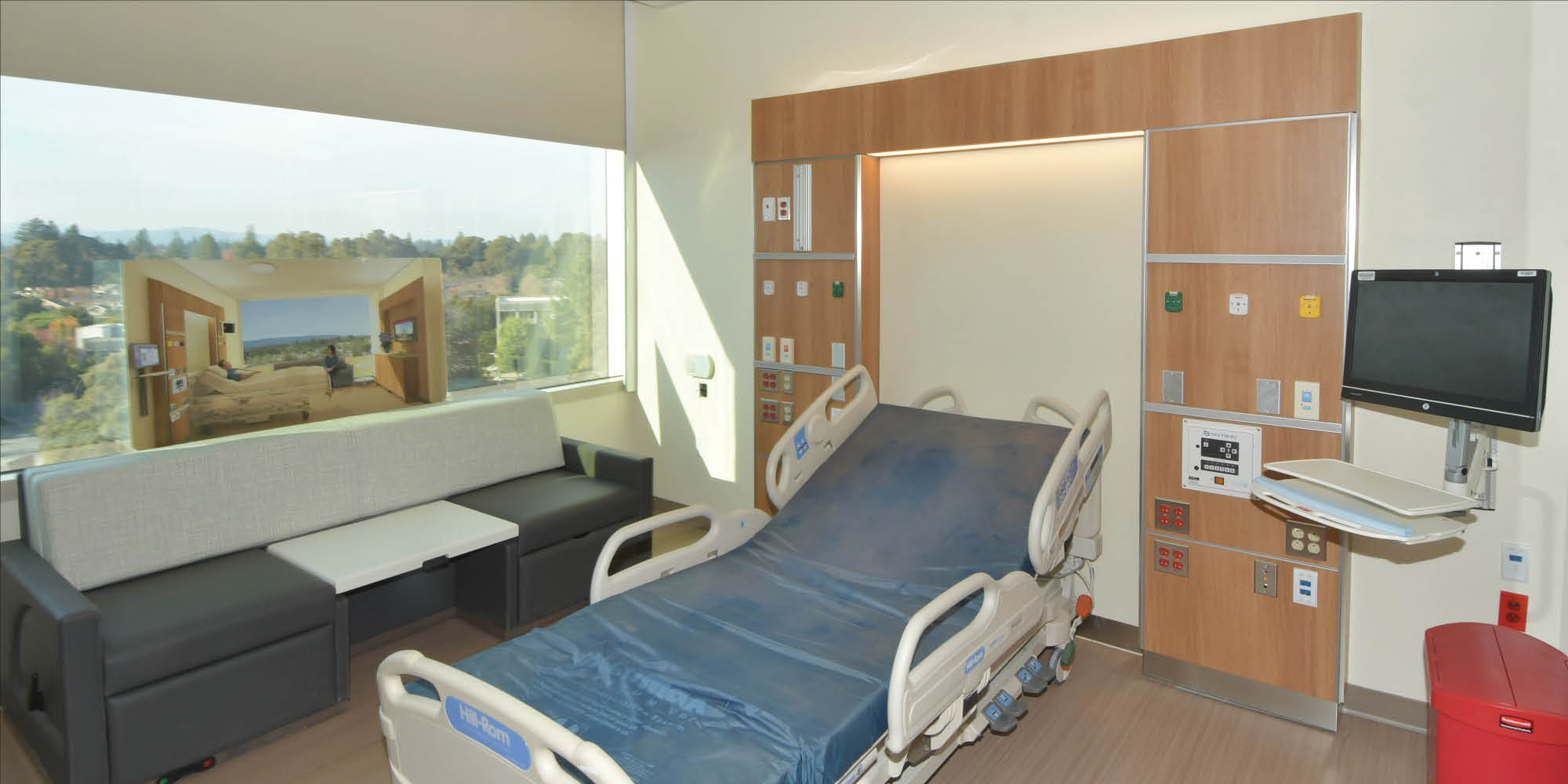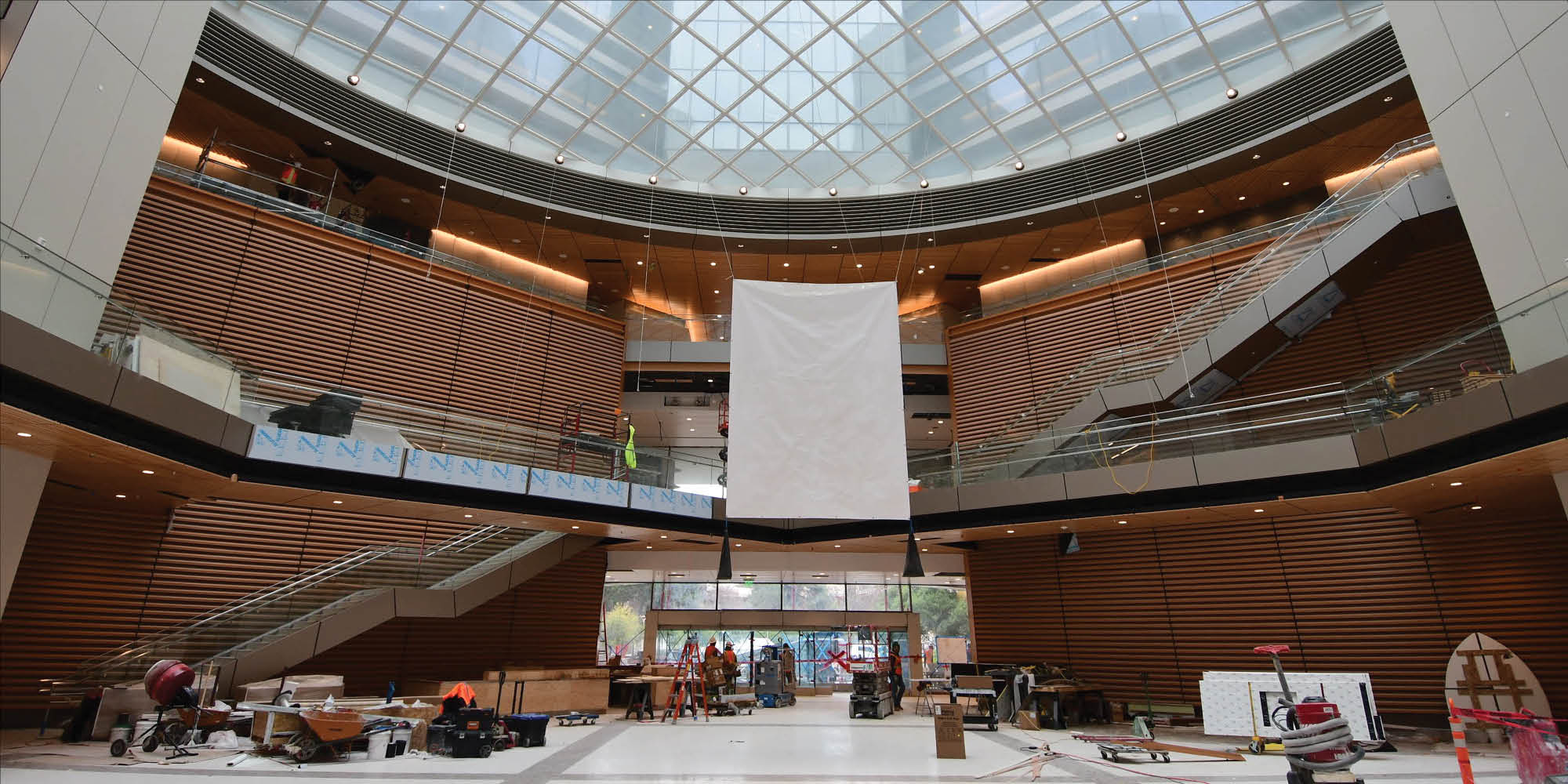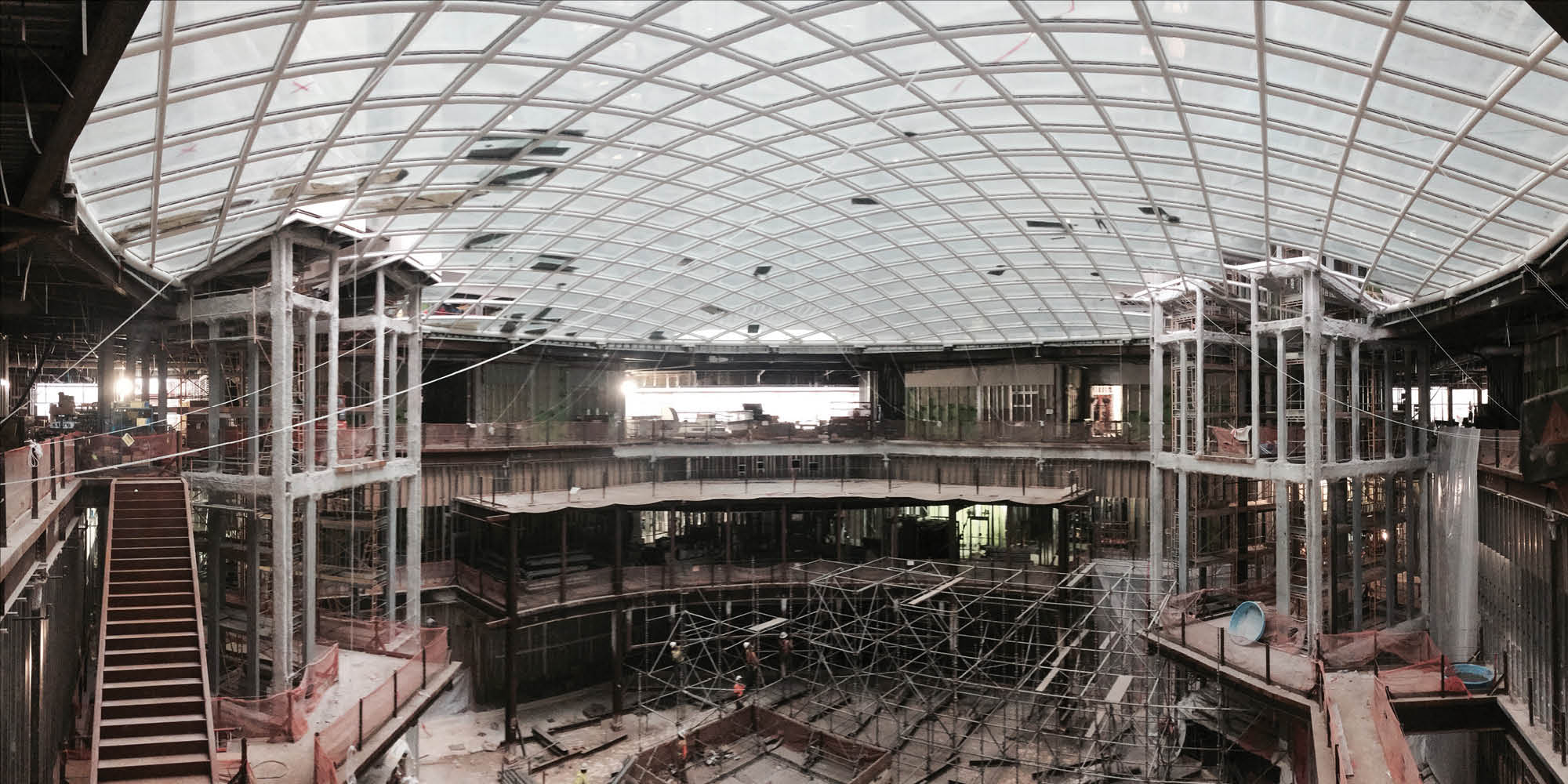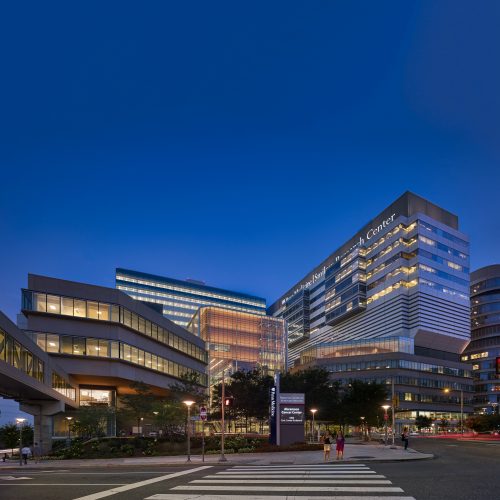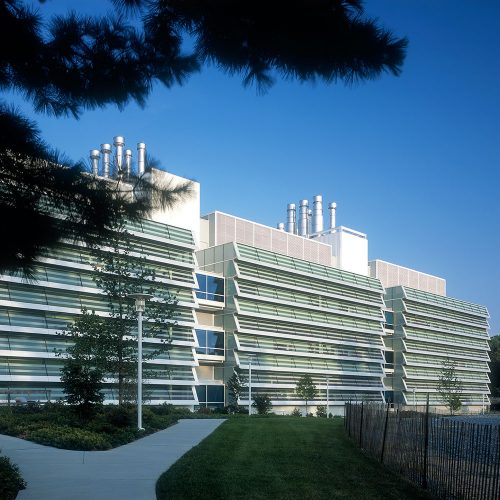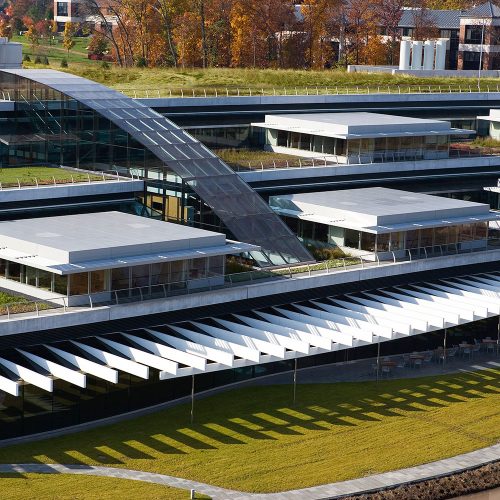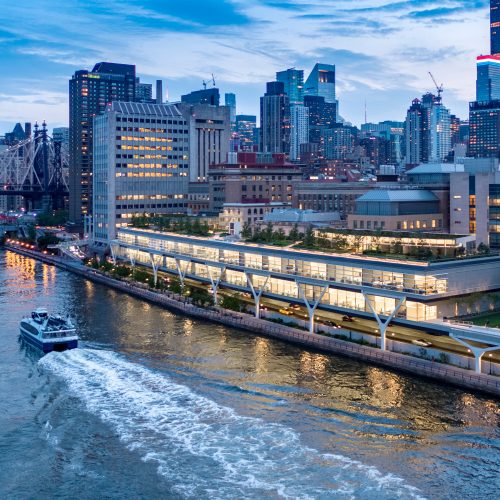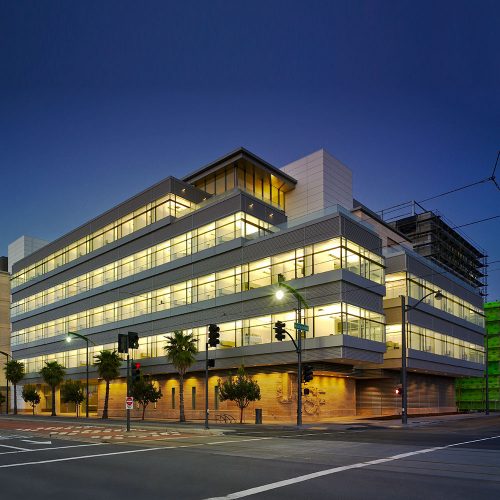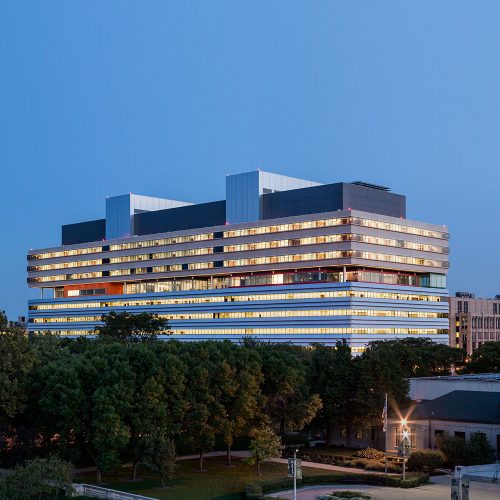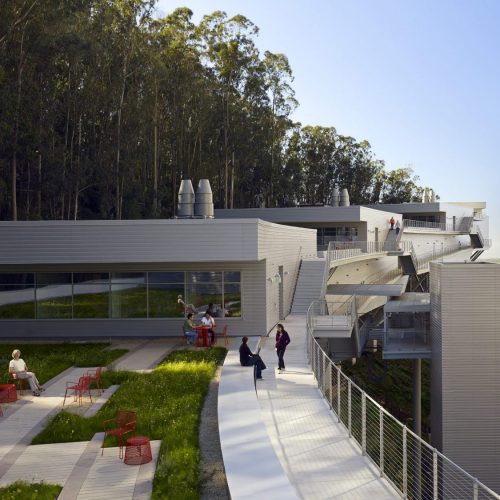New Stanford Hospital
A modular plan can be easily adapted for a variety of uses and allows both for incremental expansion of the hospital building and a horizontal development strategy that complements the low-rise campus context of Stanford University and its Medical Center.
In 2006, Stanford Hospital & Clinics required a new, state-of-the art facility that would replace existing clinical functions while maintaining and enhancing connections to its preexisting buildings. Rafael Viñoly Architects was selected for its unique approach to healthcare design: rather than creating the typical base-and-tower hospital building, the firm proposed a modular plan that can be easily adapted for a variety of uses, thus allowing both for incremental expansion of the hospital building and a horizontal development strategy that complements the low-rise campus context of Stanford University and its Medical Center.
A universal module measuring roughly 36.3 x 36.6 meters (120 by 120 feet) is deployed in a checkerboard pattern to generate a floor plan in which hospital functions alternate with open spaces. This module informs each level of the new hospital, from the basement to the top on the fifth floor. On the upper floors, patient nursing areas provide views of roof gardens. Emergency, Imaging, and Interventional departments on the lower floors are organized around an entry plaza and an atrium.
Unique in hospital design, the middle zone between the upper level bed floors and the diagnostics and treatment floors at grade feature a combination of non-clinical programs and generous roof gardens. This Garden Level on the third floor exists on the roof of the hospital’s large second story and contains a cafeteria, restaurant, conference center, staff lockers, and a lounge area, all of which overlook a garden space.
The design of the new facility reinterprets and updates the original 1959 Edward Durell Stone-designed hospital with open-air courtyards in a combination of a central atrium and rooftop green space. The atrium brings daylight and landscape to the lower levels, where a landscape feature and public amenities create a welcoming and memorable environment for patients, visitors, and staff alike. Roof gardens on the second and third floors provide additional outdoor spaces associated with the cafeteria and other public functions and are a complementary design to the courtyards and arcades found throughout Stanford University and its Medical Center campuses.


